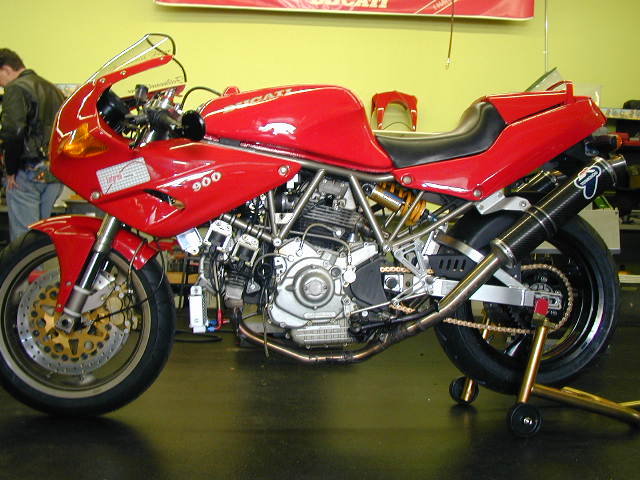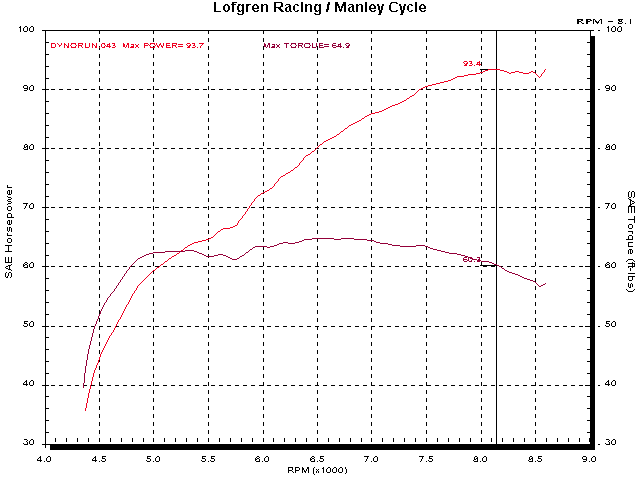
Ben Feldman worked with me at my shop, then worked for Manley when I closed my shop. Last year Ben moved to L.A. to attend a design school in Glendale.
Several years ago he bought a 900SS crash job from one of the customers. The bike had had a 944 kit installed, properly jetted, but no porting.
Ben threw it together and road the bike a little.
At some point Ben found someone who was selling an entire 1999 900SSie fuel injection system and wiring harness. Of course, he asked whether buying it would be a good idea. Since we can re-map that computer, there has to be a considerable amount of power available from the large throttles, so, yes, it's a good idea. A lot of work but, a good idea.
The point here is that the fuel injection system was being dumped because nobody wanted to deal with it.
We had to install a set of timing gears from a late-model single pick-up injected bike. Then, Mike Weston fabricated a small block of aluminum that he welded onto the alternator cover. He then machined it to receive the pick-up.
Ben performed all the tedious work of replacing the wiring harness. Replacing a wiring harness isn't really too hard but this entailed re-mounting a bunch of components as well as replacing the air-box and the instrument cluster, all of these were a little different than the stock '95 900SS parts.
When we dove into the heads we found that all the rockers were shot. I've never seen that before. It must have had really bad oil in it's earlier life. That might be the reason that this particular bike had always been hard on keepers.
Ben found a set of heads from an injected 900SS and I ported those.
For some reason, we had a really bad time acquiring the valves we needed from our usual valve supplier so I bought a set of V-Two valves from BCM. The inlets are 44mm (the size I intended to use) and the exhausts are 39mm (1mm larger than the stock exhaust valve and larger than I normally use.)
Initially, I intended to turn the exhausts down to 38mm but, after thinking about it I decided that I'd try the larger size. Since all the other components were ready to produce power at high RPM, the larger exhaust valves might be just fine. The only reason for not using a larger exhaust valve would be that both valves would have to be seated deeper into the ports in order to prevent them from contacting each other on overlap. This causes a decrease in compression. As with everything else involved in building engines, it's a compromise.
Port the heads, assemble the engine, adjust the cam timing, then install the thing and start tuning. Oh yeah, we finally got a Termignoni 'Spaghetti' system for the bike. It took five months from DP.
When we installed the pipe we found that the mufflers were 8 inches different in the height of the exits. DP was less than helpful, even stating that they were not inclined to help. So, Weston cut it and re-welded the piece in the appropriate orientation and it was good.

Ben bought a Cycle Cat top triple-clamp to adapt a set of 748 forks to the front end. An Ohlins rear shock was installed, which allows the rear end to be raised a little, and greatly improves the chassis geometry.
Two oil coolers were installed (in hopes that it would produce enough power to need them.)
Both Ben's and my 851 2-valve were done around the same time, late in the spring, so, we had to map them both from scratch. Ben's uses a 'flashload' 1.6M computer which was re-mapped with Ultimap Fuel Injected Motorcycles software/hardware.
I was pleasantly surprised when the bike made power in the 90s.
